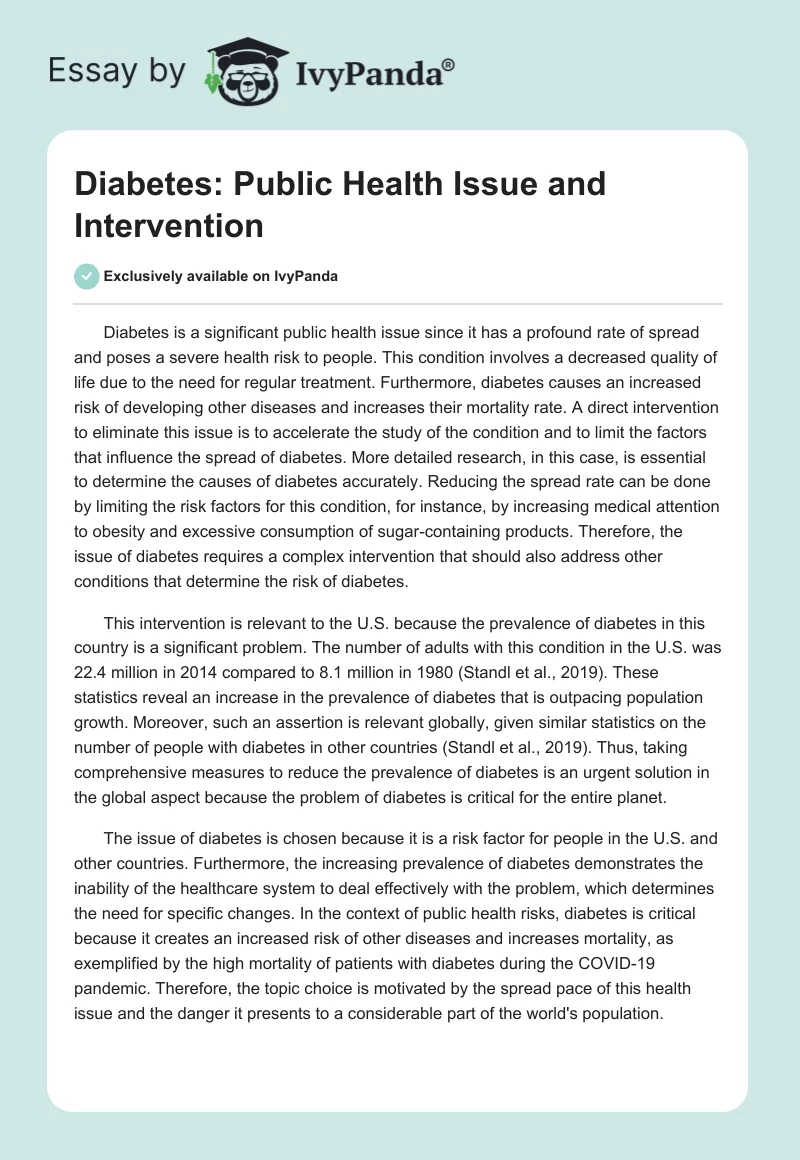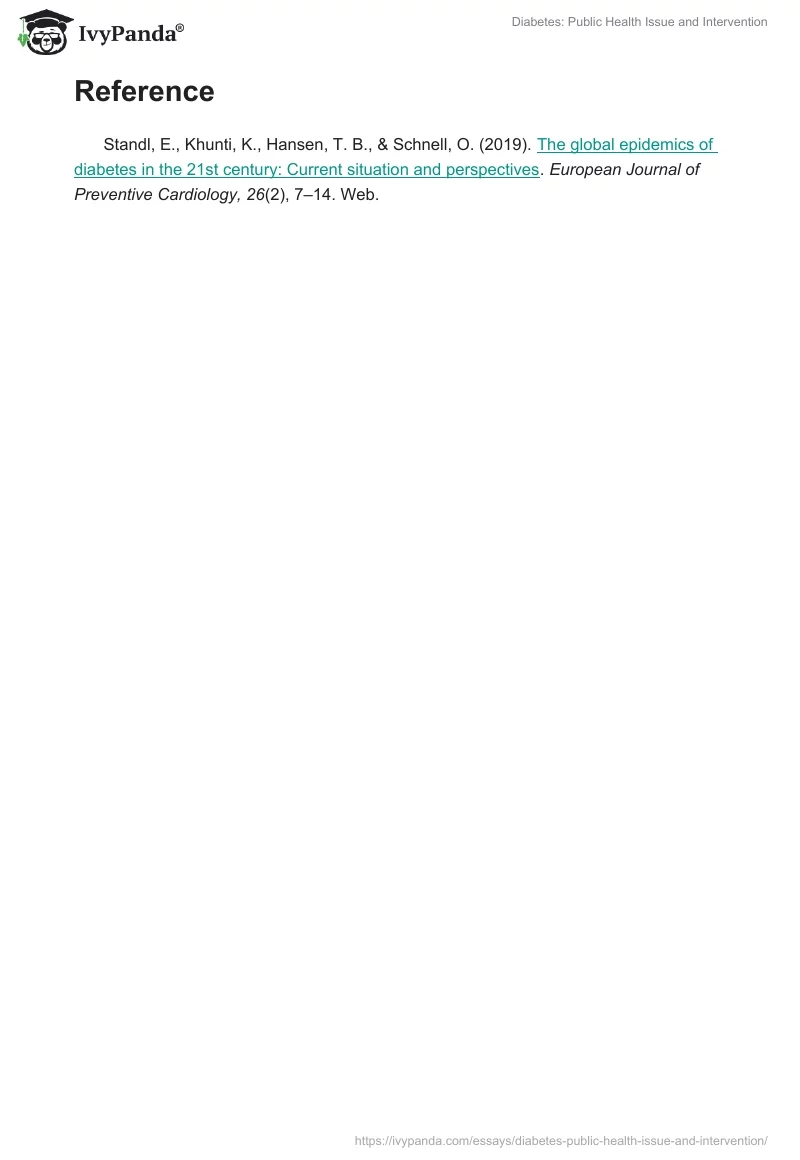Diabetes is a significant public health issue since it has a profound rate of spread and poses a severe health risk to people. This condition involves a decreased quality of life due to the need for regular treatment. Furthermore, diabetes causes an increased risk of developing other diseases and increases their mortality rate. A direct intervention to eliminate this issue is to accelerate the study of the condition and to limit the factors that influence the spread of diabetes. More detailed research, in this case, is essential to determine the causes of diabetes accurately. Reducing the spread rate can be done by limiting the risk factors for this condition, for instance, by increasing medical attention to obesity and excessive consumption of sugar-containing products. Therefore, the issue of diabetes requires a complex intervention that should also address other conditions that determine the risk of diabetes.
This intervention is relevant to the U.S. because the prevalence of diabetes in this country is a significant problem. The number of adults with this condition in the U.S. was 22.4 million in 2014 compared to 8.1 million in 1980 (Standl et al., 2019). These statistics reveal an increase in the prevalence of diabetes that is outpacing population growth. Moreover, such an assertion is relevant globally, given similar statistics on the number of people with diabetes in other countries (Standl et al., 2019). Thus, taking comprehensive measures to reduce the prevalence of diabetes is an urgent solution in the global aspect because the problem of diabetes is critical for the entire planet.
The issue of diabetes is chosen because it is a risk factor for people in the U.S. and other countries. Furthermore, the increasing prevalence of diabetes demonstrates the inability of the healthcare system to deal effectively with the problem, which determines the need for specific changes. In the context of public health risks, diabetes is critical because it creates an increased risk of other diseases and increases mortality, as exemplified by the high mortality of patients with diabetes during the COVID-19 pandemic. Therefore, the topic choice is motivated by the spread pace of this health issue and the danger it presents to a considerable part of the world’s population.
Reference
Standl, E., Khunti, K., Hansen, T. B., & Schnell, O. (2019). The global epidemics of diabetes in the 21st century: Current situation and perspectives. European Journal of Preventive Cardiology, 26(2), 7–14. Web.


